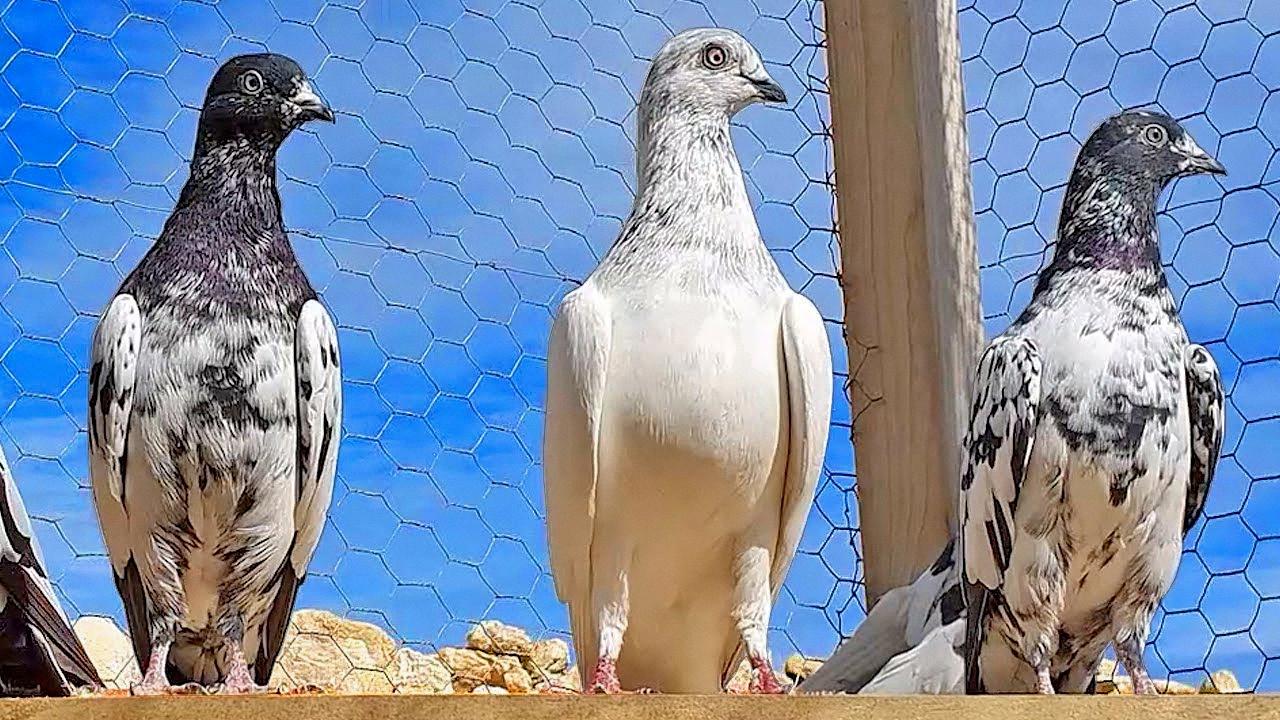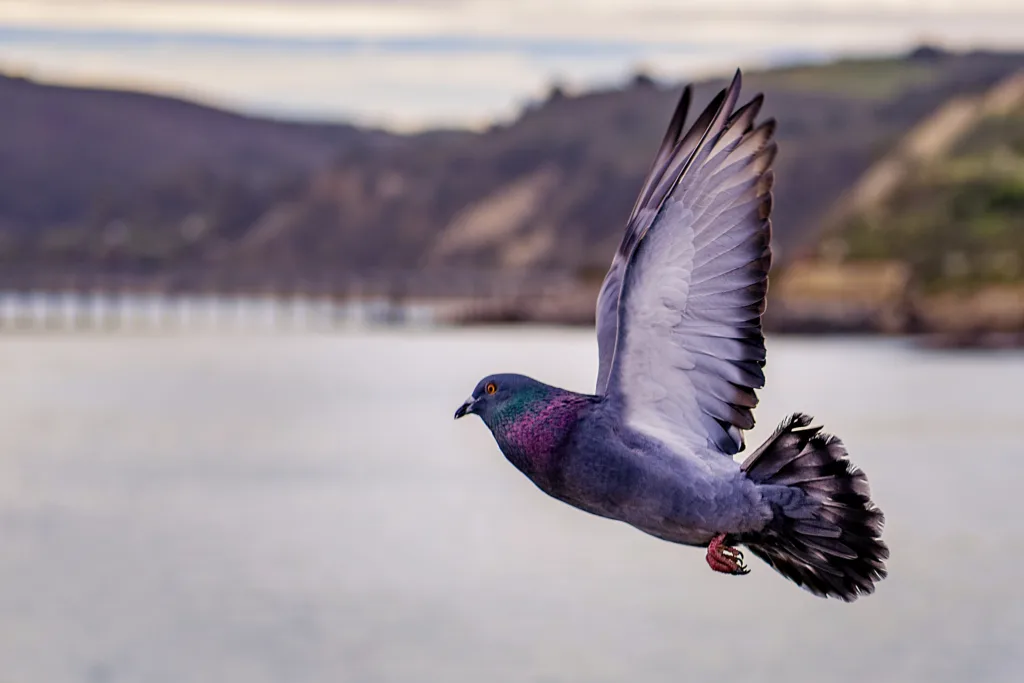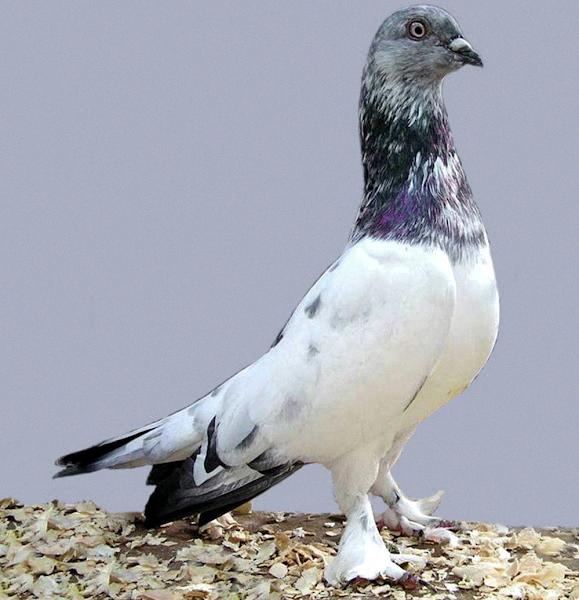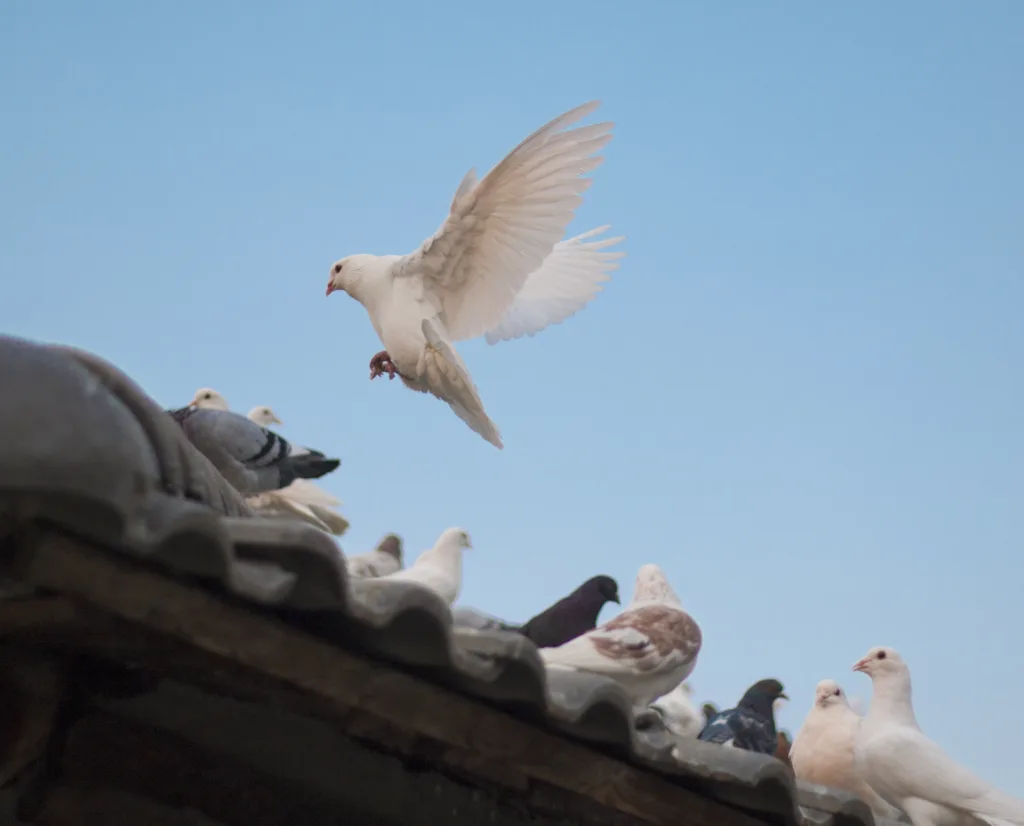Homing pigeons, also known as flyer pigeons, have been used for centuries for their incredible ability to navigate and fly long distances. These birds are known for their speed, endurance, and loyalty, making them a popular choice among pigeon fanciers and racing enthusiasts alike.
One of the most fascinating things about flyer pigeons is their ability to navigate over long distances. Scientists believe that these birds use a combination of visual, olfactory, and magnetic cues to find their way back to their home loft. They are also able to recognize landmarks and use the position of the sun to orient themselves.
In terms of speed and endurance, flyer pigeons are truly remarkable. These birds can fly hundreds of miles withut stopping for food or rest, and they can reach speeds of up to 60 miles per hour. They are able to cover distances of 500 to 800 miles in a single day, making them an ideal choice for long-distance racing.
Breeding and training flyer pigeons is a complex process that requires a great deal of patience and skill. Pigeon fanciers carefully select breeding pairs based on their physical characteristics and performance, with the goal of producing offspring that are faster, stronger, and more resilient than their parents.
Training flyer pigeons involves gradually increasing the distance of their flights, starting with short distances and gradually building up to longer ones. This helps to build their endurance and develop their navigational skills, while also ensuring that they are physically fit and healthy.
One thing that many flyer pigeon fanciers swear by is the use of natural supplements to enhance their birds’ performance. Dried ginger, for example, is known for its stimulating properties and is often used to increase flying time. Other supplements that are commonly used include lesser seeds and green cardamom.
Flyer pigeons are truly remarkable birds that have captured the imaginations of people all over the world. Whether you are a racing enthusiast, a pigeon fancier, or simply someone who appreciates the beauty and complexity of nature, these birds are sure to impress with their speed, endurance, and navigational skills.
Signs of a High Flyer Pigeon
There are a few key indicators that can help you determine whether a flyer pigeon is high or not. Firstly, highflying pigeons tend to have a more streamlined and aerodynamic body shape, with longer wings and a sleeker appearance overall. They may also carry themselves with a more confident and alert posture, with thir head held high and their eyes alert and focused.
Another important factor to consider is the bird’s behavior. Highflying pigeons are typically more active and restless than other birds, constantly moving around and flapping their wings. They may also exhibit a stronger desire to fly, often taking off and soaring to great heights at the slightest opportunity.
In addition to these physical and behavioral traits, you can also look for specific markings or colorations that are common among highflying pigeon breeds. For example, many highflying breeds have distinctive markings on their wings or tails, such as white tips or dark bands. By observing these characteristics and behaviors, you can often tell whether a flyer pigeon is high and well-suited for breeding or racing.

Source: youtube.com
Maximum Flight Duration of a Pigeon
Homing pigeons, which are known for thir remarkable flying abilities, can fly hundreds of miles without stopping for rest or food. These birds, which weigh around one pound, are capable of flying between 500 to 800 miles a day at an impressive speed of over 60 mph. This means that a pigeon can potentially fly for several days without stopping, covering thousands of miles in the process. It is worth noting, however, that in ancient times, homing pigeons were only able to fly about 100 miles a day, suggesting that their endurance and speed have improved over time through selective breeding and other factors.
The Madrasi Pigeon: An Overview
The Madrasi pigeon, also known as Thavdal, is a performance breed of domesticated pigeon that has been developed over centuries for its remarkable endurance flying abilities. The breed is believed to have originated in the southern region of India and is highly prized for its ability to cover long distances without getting tired. The Madrasi pigeon, like other breeds of domesticated pigeons, is a descendant of the rock dove (Columba livia). These pigeons are medium-sized with a distinctive appearance characterized by a compact body, short beak, and small head. They have strong wings and are capable of flying for extended periods of time, often covering distances of several hundred kilometers without stopping. These birds are also known for ther intelligence, adaptability, and sociable nature, making them popular pets among pigeon fanciers. the Madrasi pigeon is an exceptional breed of performance pigeon that has been bred for centuries for its remarkable endurance flying abilities and is highly valued among pigeon enthusiasts.
Increasing the Flight Endurance of Pigeons
If you wish to increase the flying time of your pigeons, here are some tips that may help:
1. Proper Nutrition: A well-balanced diet is essential for the overall health of your pigeons. Make sure to feed them a diet rich in protein, vitamins, and minerals. A balanced diet will ensure that your pigeons have enough energy to fly for longer periods.
2. Regular Exercise: Just like humans, pigeons need regular exercise to maintain good health. Letting your pigeons out for a fly every day will help build their stamina and endurance.
3. Training: Training your pigeons to fly for longer periods can be a gradual process. Start by letting them out for short periods and gradually increase the time they spend in the air.
4. Environment: Make sure that your pigeons have a safe and comfortable environment. A comfortable and secure loft with proper ventilation and temperature control will help keep your pigeons healthy and active.
5. Natural Stimulants: Some natural stimulants such as dried ginger, green cardamom, and lesser seeds are believed to increase the flying time of pigeons. However, it is essential to consult with a veterinarian beore using any such substances.
Taking care of your pigeons’ overall health and well-being is essential to ensure that they can fly for longer periods. Proper nutrition, regular exercise, training, a comfortable environment, and natural stimulants can all play a role in increasing the flying time of your pigeons.
Do Pigeons Have the Ability to Recognize Their Owners?
Recent research has demonstrated that pigeons are capable of recognizing individual humans, even if they are not their trained owners. This suggests that pigeons have the ability to distinguish between different people based on visual cues alone, rather than just relying on associative learning or conditioning. The study showed that feral pigeons can recognize people even when they are wearing different clothes or have changed their appearance. The researchers also noted that the pigeons were more likely to approach people they had interacted with positively in the past. tese findings suggest that pigeons are capable of forming complex social relationships with humans and have a surprising level of cognitive ability.

Attracting Pigeons to Your House
Pigeons are often attracted to ledges and balconies of houses due to the excellent vantage point they offer. These areas provide a clear view of the surrounding area, allowing the birds to scope out potential food sources that they can exploit. Homeowners who leave food outide for other birds or have exposed trash in bins may unknowingly attract pigeons to their property. Additionally, pigeons are attracted to areas that provide shelter and nesting opportunities, such as rooftops and eaves. Therefore, it’s essential to keep your property clean and free of food debris to discourage pigeons from flocking to your house.
Do Pigeons Sleep While Flying?
Pigeons do sleep while flying, but only for short periods of time. They sleep while on rising air currents, which allow them to gain altitude and keep them from falling in the water during the short 10-second bursts of total sleep they grab while flying. This is known as unihemispheric slow-wave sleep, which means that only one half of their brain sleeps at a time, while the oher half remains awake and alert to any potential dangers. Pigeons are able to sleep while flying due to their highly developed navigational skills and their ability to fly on autopilot, allowing them to rest while still maintaining their course. It is important to note that while pigeons are able to sleep while flying, they still require proper rest and sleep on solid ground to maintain their health and well-being.
Do Birds Sleep While Flying?
Birds can sleep while flying. However, they do so in short bursts and usually with only one-half of their brain resting at a time. This type of sleep is known as unihemispheric slow-wave sleep. During this sleep mode, one half of the bird’s brain is awake, while the oter half is in a state of rest. This allows the bird to remain alert to any potential dangers while still getting some much-needed rest. Some species of birds, such as Swifts, can even fly for months at a time without landing, and they have been observed sleeping while in mid-air. while birds can sleep while flying, they do so in a unique way that allows them to stay safe while still getting the rest they need.
Maximum Lifespan of a Pigeon
The maximum lifespan of a pigeon varies depending on whether they are in captivity or living in the wild. Pigeons in captivity can live up to 30 years, while feral populations have a lifespan of about four years. However, it is important to note that these are maximum lifespans and not all pigeons will live this long. Factors such as diet, habitat, and predation can affect the lifespan of a pigeon. the average lifespan of a pigeon is around 4-6 years.

Source: roysfarm.com
The Cost of Pigeons
The pigeon that is considered to be the most expensive is Armando, a Belgian racing pigeon. In a highly publicized auction held in 2019, Armando was sold for an impressive total price of 1.26 crore rupees, which is roughly equivalent to 170,000 US dollars. This made him the most expensive racing pigeon ever sold. Armando was known as the “greatest Belgian long-distance pigeon of all time” and was also referred to as the “Lewis Hamilton of pigeons”. His impressive racing record and breeding potential contributed to his high price tag, making him a highly sought-after bird among pigeon fanciers and collectors.
The Luck of Pigeons in the Home
According to some traditional beliefs and superstitions, having a pigeon nest in your house can be considered lucky. Pigeons are believed to bring good fortune and prosperity to the home they reside in. Their presence is associated with positive energy, bringing peace and harmony to the household.
In some cultures, pigeons are also believed to bring messages of love, hope, and peace. This is why they are often used as symbols of love and devotion in art and literature.
However, it’s important to note that this belief is based on superstition and not scientific evidence. Whether or not having a pigeon nest in your house brings luck is a matter of personal belief and perspective.
While some may consider pigeons to be lucky for the home, it’s important to remember that these beliefs are based on superstition and not proven fact.
The Rarest Breed of Pigeon
The rarest breed of pigeon is the Socorro dove (Zenaida graysoni), which is considered critically endangered with only around 100 individuals remaining in the wild. This pigeon species is native to Socorro Island, off the coast of Mexico, and has been threatened by habitat loss, introduced predators, and hunting. The Socorro dove is part of a conservation program that includes captive breeding and habitat restoration to increase its population and prevent its extinction. While there are other rare pigeon species, such as the pink pigeon in Mauritius, the Socorro dove is the rarest and most endangered.
Bonding with a Pigeon
Bonding with your pigeon can be a rewarding experience, and it starts with creating a comfortable and safe environment for your feathered friend. To begin, allow your pigeon to explore your house in an enclosed space, like a small room. This will help your pigeon become more familiar with its surroundings and start to feel more comfortable in your home.
As your pigeon becoes more comfortable, you can start to handle it on a daily basis. This can include offering food by hand, grooming your pigeon, and just spending time in the same room. By handling your pigeon regularly, you will build trust and create a strong bond between you and your bird.
It’s also important to take the time to observe your pigeon’s body language and behavior. This will help you better understand its needs and preferences, and it will also help you recognize when your pigeon is feeling happy and content.
In addition, providing your pigeon with plenty of food, water, and a clean living space will help build trust and create a positive environment. This will also help your pigeon feel more comfortable and relaxed around you.
Bonding with your pigeon takes time, patience, and consistency. By creating a comfortable and safe environment, handling your pigeon regularly, and observing its behavior, you can build a strong and rewarding bond with your feathered friend.

Do Pigeons Have an Affinity for Tin Foil?
Pigeons are not particularly fond of tin foil. The crinkling sound and feel of the foil can be uncomfortable for them. Some people have reported success in deterring pigeons by placing sheets of foil on surfaces were the birds like to perch. However, it’s important to note that this method may not work for all pigeons, as some may not be bothered by the foil. Additionally, it’s crucial to ensure that the foil does not pose a danger to the birds, as they may accidentally ingest it if it becomes torn or fragmented. while tin foil may be a potential method of deterring pigeons, it’s important to consider other humane and safe options as well.
How to Make a Pigeon Less Fearful of You
If you want to make a pigeon not scared of you, thre are a few steps you can take. Firstly, it’s important to approach the pigeon calmly and slowly, without making any sudden movements or loud noises. Avoid making direct eye contact, as this can be perceived as a threat by the bird. Instead, try looking at the pigeon from the corner of your eye or by glancing sideways.
Next, try offering the pigeon some food or treats, such as birdseed or small pieces of fruit. This can help to build trust and positive associations with your presence. You can also try leaving some food out for the pigeon regularly, so that it becomes accustomed to your presence and starts to associate you with a source of food.
It’s also important to spend time around your pigeon and engage with it, whether that’s by talking to it in a soothing tone of voice, or by simply being in the same room and allowing the bird to get used to your presence. Try not to make any sudden movements or loud noises, as this can startle the pigeon and set back any progress you’ve made.
Remember to be patient and consistent in your interactions with the pigeon. Building trust and overcoming fear can take time, so it’s important to approach the process with a calm and gentle attitude. With time and effort, you can help your pigeon feel comfortable and safe around you.
Conclusion
Homing pigeons are an impressive breed of performance pigeons that have been developed over centuries for endurance flying. They have the ability to fly hundreds of miles without stopping and can cover 500 to 800 miles a day at speeds of more than 60 mph. Pigeon fanciers in Pakistan and India have found that using stimulants such as dried ginger, lesser seeds, and green cardamom can help increase their pigeon’s flying time. When selecting pigeons for breeding, it is important to look for those with pupils that change size under different lighting conditions, as this indicates a stronger ability to navigate and fly. The Madrasi Highflyer, or Thavdal, is a popular breed of performance pigeon that has been developed for its impressive flying capabilities. All domesticated pigeons are descendants of the rock dove, or Columba livia. flyer pigeons are a fascinating and impressive breed that continue to capture the attention and admiration of pigeon enthusiasts aound the world.
